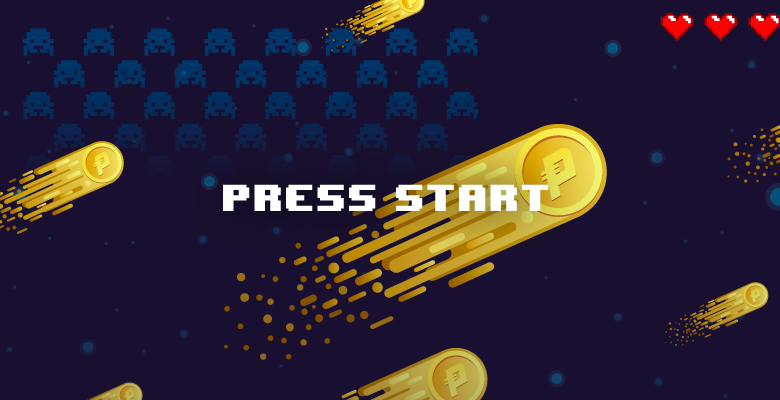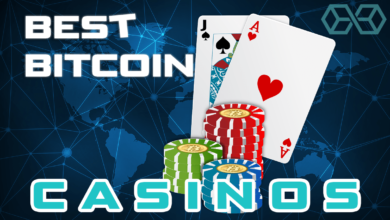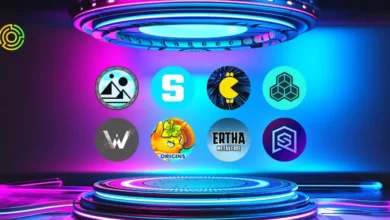Crypto Gaming – It Sucks But Developers Can Fix It

wwCrypto gaming is ineffective. To remedy it, developers must concentrate more on the essentials and less on aesthetics.
Web3 gaming, as it currently exists, is ineffective. Play-to-earn hasn’t worked and won’t work, nor will any other X-to/and-earn. Additionally, traditional gamers view nonfungible tokens (NFTs) with distrust. They slam on pricey apes and have doubts about big game publishers using NFTs as lipstick to increase revenue.
Nobody is yet aware of what a popular Web3 game will resemble. We need more developers to test more models to get there. Infrastructure that lowers obstacles to Web3 game development and facilitates experimentation is required. It is crucial to make investments in building the supporting infrastructure rather than getting carried away by the speculative buzz for this reason.
There are two stages to the Web3 gaming infrastructure:
Pre-release: Pre-launch infrastructure
Infrastructure for the game’s post-release rollout.
Web3 gaming requires financial infrastructure (marketplaces and launchpads), technical infrastructure (blockchains, analytics, and tooling), and a third category that combines both types of infrastructure, such as metaverse platforms and guilds.
The Mint In Pre-Release Development: Navigating It
When determining where and how to mint the game’s NFTs, game makers have a lot of alternatives. ImmutableX and Klaytn, two specialized gaming blockchains, provide minimal to no gas fees and excellent throughput.
Additionally, several games are establishing their blockchains to benefit from the most flexibility and scalability. Axie Infinity introduced the Ronin sidechain, and DeFi Kingdoms has an Avalanche subnet known as DFK Chain. Technically speaking, starting a standalone chain is challenging.
By providing a streamlined experience for developers looking to establish their chains, up-and-coming players like Saga are attempting to satisfy this new need.
In the future, Web3 game creators will choose full-stack Web2.5 integrators that only provide SDK and API toolkits instead of building up their chains because they will give the most straightforward experience. Full-stack infrastructure providers prioritizing the developer experience include Forte, Stardust, and Particle Network.
Inflationary Tokenomics Are On The Way Out
Web3 games include the option of pre-selling game assets and in-game tokens to pay for the first stages of production. The inflationary token economic paradigm has seen its ups and downs.
Selling tokens and gaming assets will become more selective, especially those with governance and ownership elements akin to those in equities. Buyers who are active or significant contributors to a project, such as content producers, infrastructure providers, and community managers, will be allowed or given preference.
Social Engagement Mechanisms Must Increase
Because there aren’t many exciting games available, there is a complex chicken-and-egg problem with Web3 gaming growth and engagement infrastructure.
However, once a small number of Web3 games reach a critical mass, the network effects from identity data will allow these platforms to quickly bootstrap and develop as a group.
Related: GameFi makers may have to pay significant penalties and serve lengthy sentences
In addition to the absence of exciting games, Web3 games lack common elements like reviews and social features. Since customers may quickly switch to new competitors without losing their assets, there is plenty of potential for competition and innovation.
Unlocking Asset (NFT) Utility
Web3 gaming communities and participants typically share value capture. Players can earn or purchase in-game items and currencies from one another, forming a player economy instead of buying everything from the game’s developers.
Productive digital assets that may be rented, borrowed against, or staked become an alluring source of revenue for developed Web3 game economies. Given how profitable it may be, successful games may even decide to create their internal replacements, like in the case of the marketplace in Axie Infinity or the upcoming decentralized exchange in StepN.
Metaverse & Guilds Platforms
In addition, guilds and metaverse platforms provide funding, integrations, and collaborations for games. In the same way, that large publishers and distributors in traditional gaming are in an excellent position to become focus points for Web3 gaming. The critical distinction is that participants and creators can participate in governance and own sizable stakes through decentralized autonomous organizations.
The two most popular metaverse platforms are The Sandbox and Decentraland. But because of the upfront costs associated with both, many lands were sold to speculators who have no real value to the ecosystem. Mona, free for creators up front until a spot is minted and sold, adopts a different strategy.
Prepare for the federal government to begin charging NFT traders.
Meanwhile, thousands of gamers have joined Web3 gaming guilds like Yield Guild Games and Merit Circle to support new titles, most notably Axie Infinity.
Due to increasing rivalry, the guilds are forced to stand apart. For instance, Snack Club uses Brazil’s 300 million-strong gaming and esports lifestyle community Loud. Jambo is creating an African super-app that combines games, decentralized money, and telco services.
Our lives are not complete without games, which have long been a frontier for human research. That exploration includes what we have seen so far in Web3 gaming. There are undoubtedly a lot of traps.
Because everyone expects they will make money playing games, most Web 3 gaming economics today is problematic. It is not the way economies operate. So let’s avoid confusing genuine adoption and retention with speculative enthusiasm, which is unstable and erratic.
Shi Khai Wei is the general partner and COO of LongHash Ventures, an accelerator and venture fund focused on Web3. Shi Khai received the Forbes 30 Under 30 award in 2021 in honor of his accomplishments. At McKinsey & Company, he formerly worked as a management consultant focusing on digital transformation and analytics in Southeast Asia’s finance and telecoms industries.
The firms featured in this article—Saga, Particle Network, Mona, and Jumbo—are part of the LongHash portfolio. This post is designed for general informational purposes and should not be construed as investment or legal advice. The author’s views, ideas, and opinions are their own and do not necessarily reflect or stand for those of Cointelegraph.
Web3 gaming, as it currently exists, is ineffective. Traditional gamers view nonfungible tokens (NFTs) with distrust and have doubts about big game publishers using NFTs to increase revenue. Infrastructure that lowers obstacles to Web3 game development and facilitates experimentation is required. There aren’t many exciting Web3 games, but the network effects from identity data will allow these platforms to quickly bootstrap and develop as a group. Players can earn or purchase in-game items and currencies from one another, forming a player economy instead of buying everything from developers.
Mona, free for creators up front until a spot is minted and sold, adopts a different strategy. Thousands of gamers have joined Web3 gaming guilds like Yield Guild Games and Merit Circle. Snack Club uses Brazil’s 300 million-strong gaming and esports lifestyle community Loud.




